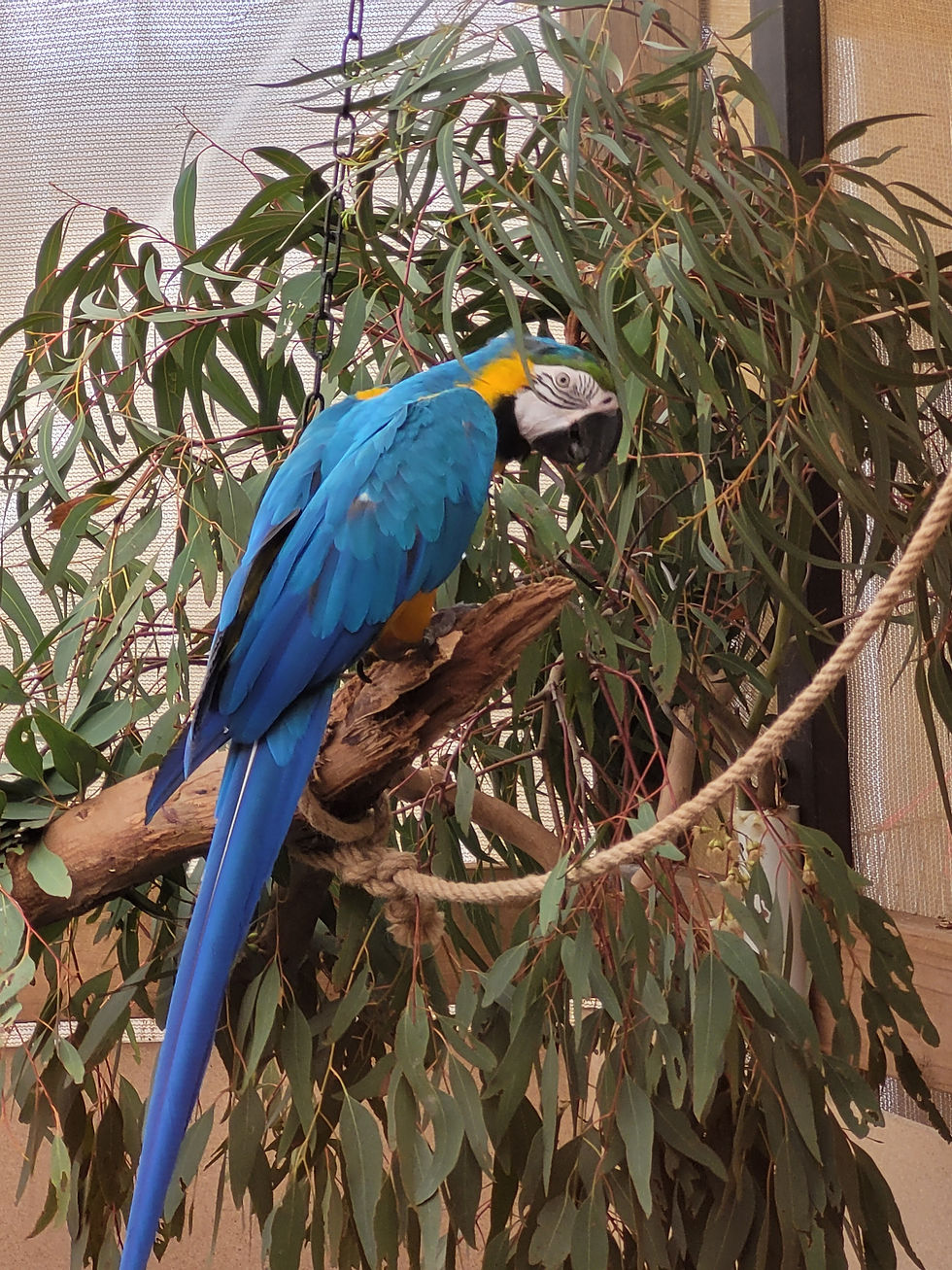Wrong Turns on the Path to parrot Bonding: A Guide to Getting it Right
- Jasmine Baldacchino

- Jun 5, 2024
- 3 min read

Throughout the years, breeders and handraisers have developed various methods to help birds adjust to their new environments and bond with their caregivers and families. While some techniques are effective, others may not yield the desired results and could have a negative impact on a bird's well-being and our relationship with them in the future. In this guide, we will discuss these methods, explaining why they are ineffective or inappropriate, and offer alternative approaches to ensure you establish a lasting relationship built on trust and respect with your parrot.
1. CLIPPING OR TAPING WINGS:

Clipping or taping a bird's wings before sending them to their new home is still a common practice. All it essentially achieves is taking away the young bird's ability to fly, which is their primary means of escaping perceived danger. Removing flight from any bird, especially one already uncomfortable, and forcing interactions, not only impedes bonding due to a lack of trust but also leaves the bird feeling trapped, potentially resulting in defensive behaviours like biting.
Rather than resorting to clipping or taping a bird's wings, prioritise creating a safe environment where the bird feels secure. Allow the bird space and time to acclimate and become comfortable at their own pace. Pay close attention to their body language, respecting their signals and moving accordingly. If your bird isn't immediately comfortable with stepping up, that's alright; patience is key. Instead, focus on engaging in enjoyable, hands-off training sessions to foster positive interactions, gradually building trust and confidence over time.

2. REMOVING TOYS AND ENRICHMENT:
Depriving birds of toys and enrichment to solely focus on their new caretakers isn't healthy for the birds or their human companions. Toys and enrichment are essential for providing mental stimulation and physical activity, fostering independence and positive behaviours. Engaging in toy play and enrichment activities encourages birds to exhibit desirable behaviours and serves as alternative behaviour for potential undesirable ones. Removing all toys and enrichment can lead to profound boredom, frustration, and an increased co-dependency on human interaction for stimulation.
Offering a diverse range of toys and activities empowers birds to entertain themselves and explore their environment, mitigating the likelihood of boredom and co-dependent behaviours. Additionally, engaging in toy play can create a shared experience between birds and humans, providing an alternative avenue for interaction and strengthening their bond while enjoying each other's company.
3. LIMITED SOCIALISATION:

Contrary to popular belief, birds are not exclusively 'one-person birds' and are quite capable of forming multiple relationships and bonds within their flock. Isolating a bird and restricting their social interactions to only one person can result in unhealthy attachments, loneliness, and difficulties in forming relationships. It's crucial to socialise your bird with all family members and involve them in daily tasks such as feeding, cleaning, and training. Doing so not only strengthens the bond between the bird and each family member but also ensures the bird's well-being and mental stimulation. By engaging with various family members, the bird learns to trust and interact with a broader range of individuals, fostering social skills and reducing the risk of loneliness or overreliance on one person.
4. FORCED HANDLING:
Birds, like all animals, need to feel safe and secure in their environment and interactions. When handling is forced upon them, it violates their sense of security and erodes their trust in the person attempting the handling which can lead to aversive associations. This can cause the bird to develop fear or avoidance behaviours towards with the person engaging in the forced handling and even in some cases with other humans. Additionally, forced handling disregards the bird's boundaries and preferences for physical contact, potentially leading to discomfort or even injury.

Instead of resorting to forced handling, it's crucial to adopt a patient and gentle approach. Start by establishing a calm and positive environment conducive to interaction, giving the bird the freedom and space to approach you at their own pace. Utilise positive reinforcement training methods to teach simple behaviours. Fostering trust and communication.
As you start your journey to bond with your bird, remember the importance of patience, respect, and understanding. In addition to positive reinforcement training and providing enrichment, be cautious about the advice you receive and the sources you trust.

Trust your instincts; if something doesn't feel right, it probably isn't. If you find yourself in need of extra assistance or guidance along the way, know that Parrot Life Behaviour and Training is here to support you. Together, we can help you cultivate a deep and fulfilling bond with your feathered companion that will bring joy and enrichment to both of your lives for years to come.

.png)



Comments